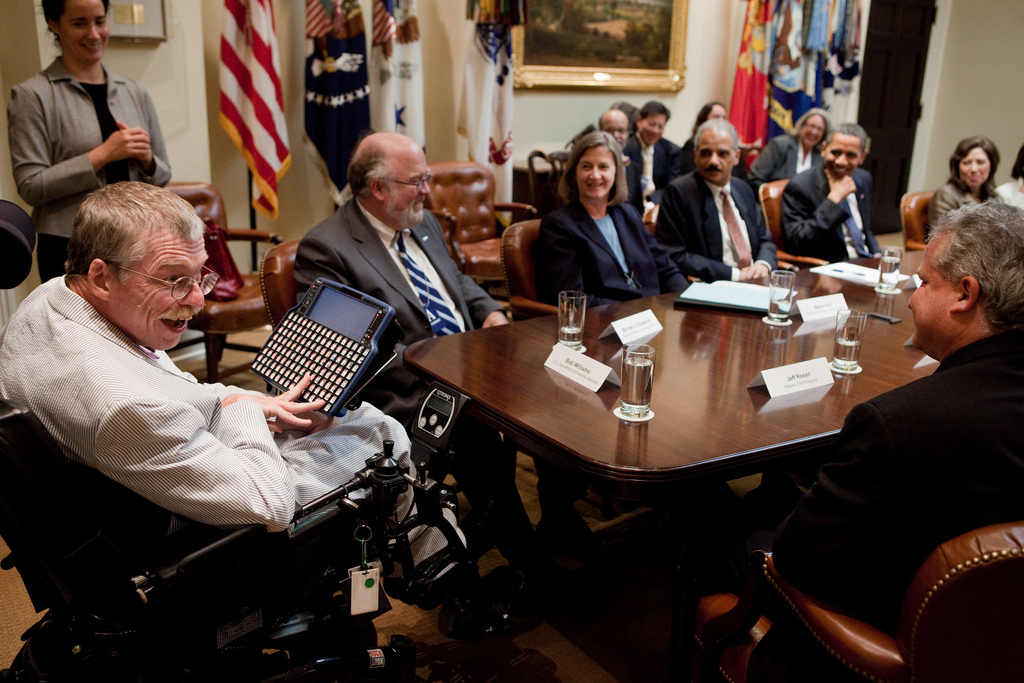

Seventeen years ago today, the Supreme Court ruled in Olmstead v. L.C. that, under the Americans with Disabilities Act (ADA), the unjustified institutional isolation of people with disabilities was a form of unlawful discrimination. This decision paved the way for many people with disabilities to live in their community rather than in institutions.
The Olmstead story started when the original plaintiffs, Lois Curtis and Elaine Wilson, were in a state psychiatric hospital in Georgia. They filed suit in 1995 seeking disability services in the community. Since the landmark decision in 1999, Lois has gone from living in a psychiatric institution to living in her own home and having a successful career as an artist.
For the last eight years, the Obama Administration has led vigorous Olmstead enforcement efforts that have breathed new meaning and real life into the Supreme Court’s community integration ruling so that individuals with disabilities can experience success and self-determination, like Lois Curtis has. Since 2009, we’ve taken action and filed briefs in 50 Olmstead integration matters in 25 states. Because of the Department of Justice’s Olmstead enforcement work, today more than 53,000 people with disabilities will have meaningful opportunities to receive services in integrated, community-based settings.

The Administration’s Olmstead community integration efforts span an array of areas. Throughout our work, we see close connections between barriers to education and limited opportunities in employment. We see how service systems that unnecessarily rely on segregated settings, like nursing facilities and sheltered workshops, to provide services to people with disabilities produce greater isolation instead of better outcomes. We see that unnecessary segregation severely diminishes one’s options in life and interferes with the full range of activities that shape our daily lives.
The Administration’s Olmstead efforts make one thing abundantly clear: work produces far more than a paycheck. Work can empower our economic self-sufficiency, our independence, our personal growth and our self-esteem. Through its Olmstead investigations, the Department of Justice met people with disabilities stuck in sheltered workshops but capable of, and wanting to, work in their own communities – individuals like Zavier and Gabrielle. Zavier used to earn $1.70 per hour assembling small parts. Today, as a result of a settlement agreement in Oregon and with employment support, Zavier works at a local YMCA, helping kids complete their homework and resolve their conflicts. Gabrielle used to assemble nut-and-bolt kits and knee pads in a sheltered workshop for $100 to $150 per month. Instead, she now works as a grooming assistant at a dog day care and boutique, earning more than $9 per hour, and she recently purchased her own house.
The success stories of Zavier and Gabrielle highlight how when we break down barriers of discrimination, we empower people. We create stronger, more inclusive communities. We enable men and women to reach their potential and to realize their dreams. And taken collectively, these stories and the Administration’s Olmstead enforcement and community integration efforts show that protecting the civil rights of people with disabilities creates tangible benefits for all of us. It strengthens our communities, our economy and our society writ large.
Vanita Gupta is Principal Deputy Assistant Attorney General.


